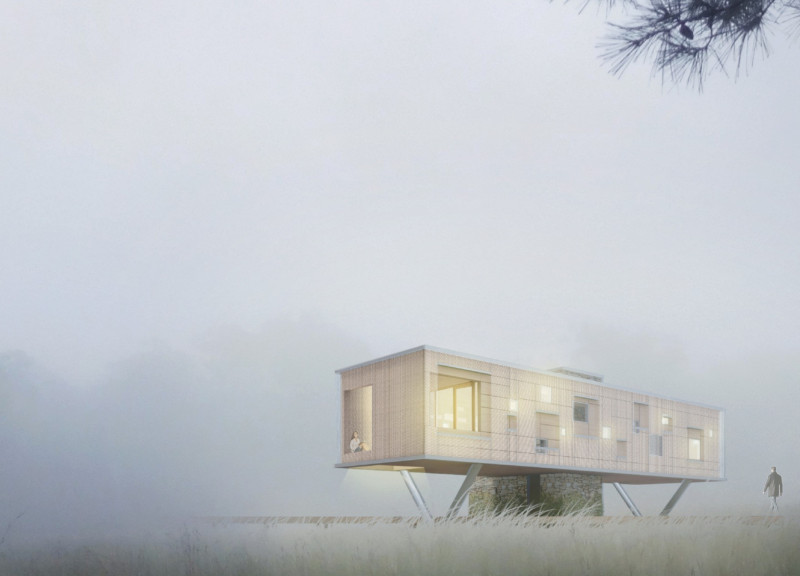5 key facts about this project
Fog Harvester is a lightweight, elevated residence that integrates with its surroundings while addressing environmental concerns through innovative design. Located in a climate characterized by frequent fog, the building serves as both a residence and a functional system for collecting atmospheric moisture. The structure is elevated above the ground on slender columns, minimally disrupting the existing landscape and enabling interaction with the natural environment beneath.
The design emphasizes lightweight construction through the use of locally sourced spruce plywood for the superstructure, complemented by a robust stone tower for stability and thermal mass. The interior includes multifunctional spaces for well-being, such as yoga and relaxation areas, all flooded with natural light from strategically placed windows. A fog harvesting mechanism integrated into the roof captures moisture, channeling it into storage systems for potable water.
Unique Aspects of the Design
What sets the residnece apart is its responsive design approach to local climatic conditions. The fog harvesting system comprises specialized mesh screens adept at capturing water droplets, tailored to the project's specific environment. This innovation exemplifies resourceful, sustainable architecture in a challenging climate.
Additionally, the building's elevated form promotes wildlife interaction, fostering biodiversity and encouraging occupants to connect with nature. Integrated pathways and raised platforms, facilitated by the support columns, allow users to traverse the landscape without harming native vegetation.
Architectural Innovations
The layout of the Fog Harvester prioritizes functionality alongside aesthetic appeal. Each space is designed to be multifunctional, maximizing natural light and ventilation. The inclusion of a yoga studio highlights the project's dedication to wellness, providing a tranquil environment within the forest. Material selection, including cork flooring for durability and comfort, is significant in maintaining a healthy indoor climate in a humid environment. The design's attention to detail ensures the building meets occupant needs functionally and resonates with its ecological context.





















































